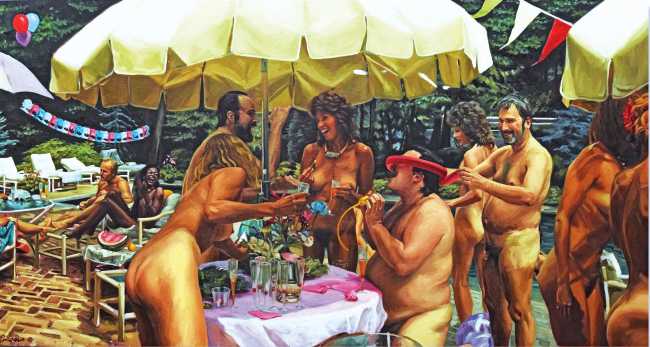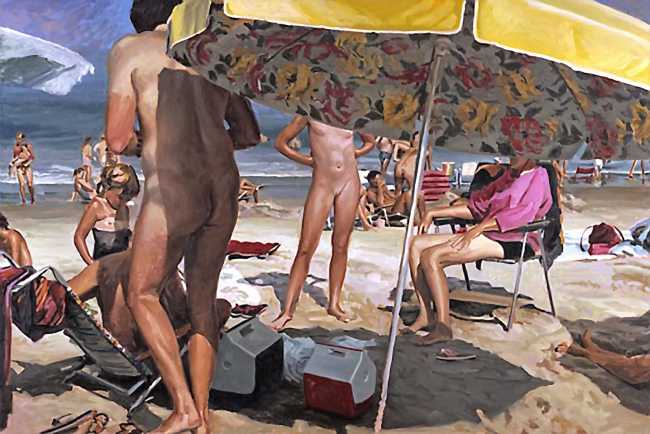The catalogue for Terry Rodgers’ 2018 London exhibition at the Jerome Zodo Gallery includes a good introduction to the artist’s work:
‘Rodgers excels at painting excess. His canvasses celebrate the surface as much as they hint at what simmers underneath. Golden candelabras, glasses of champagne, silk and rich upholstery form the backdrop for a group of gorgeous lost souls. These figures tend to have a floating presence, as if they are caught an existential stasis. Their skin is shiny to the point of being translucent, their gaze is pointed down or outwards. Some blushingly stumble through a drunken daze while others try to strike a nonchalant pose. Together, they represent a contemporary experience of social structures. Through painting the body in a cage of luxury, Rodgers has found a striking metaphor for the series of disconnects that can occur between body, mind and the other. In his most recent work, he seems to have put an emphasis on these mental and physical gaps by highlighting edges and focusing on transparencies. By combining intimate body politics with jet-set aesthetics, he shows imagined spaces where capitalist fantasy meets a deeply human reality.
Using a nearly photo-realistic style of painting, Rodgers creates a sense of unity where there is none. The figures in his paintings were never in the same room together, and their setting is in fact a collage of several architectural elements painted on the same surface. Space is flattened and elements are arranged in two-dimensional layers similar to those used in image editing software. Throughout the years, Terry Rodgers has photographed a plethora of models and settings. He collects these images in a vast digital database. All his compositions are arranged by combining elements from this collection. In the scale-less, vector-based playground of his software, he can create dynamic, complex compositions that flow together into one imaginary space once painted.’

The series has appeared under various exhibition titles, including The Apotheosis of Desire, Solo Spaces, and Vectors of Desire. The individual paintings have similar tantalising titles, such as ‘The Artificial Boundaries of Illusion’ and ‘The Delicate Process of Limiting Access’, though it is in truth the stories we read into the complex canvases that give them their meaning and personal significance. The origins of the theme can be found in the early 1990s in paintings like ‘Trophy Wives’ and ‘Beach Venus’, where the naked characters are at least engaging with each other in recognisable, if unnaturally sociable, ways. It took another decade for Rodgers to find his trademark theme of naked vulnerability in luxuriously-staged, alcohol-fuelled settings.






























































